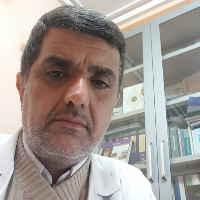Risk Factors for Hepatitis C Virus Among High-Risk Populations (Intravenous Drug Addicts and Patients with Thalassemia, Hemophilia, Hemodialysis) in Mazandaran
Author(s):
Abstract:
Background and
Purpose
More than 3% of the world population are infected with Hepatitis Ç virus (HÇV) and 50-80% of these patients progress to chronic disease. Âpproximately 50% of chronically infected patients do not respond to treatment. The purpose of this study was to determine the risk factors for hepatitis Ç virus among high-risk populations (Ïntravenous drug addicts and patients with Thalassemia، Hemophilia، hemodialysis patients) in Mazandaran. Materials And Methods
Totally، 132 patients (34 with Thalassemia، 31 with hemodialysis، 30 with Hemophilia، and 37 with Ïntravenous drug addiction) were studied. Âll patients had anti-HÇV and were HÇV-RNÂ positive. Demographic data، epidemiological characteristics، clinical findings and laboratory parameters were recorded in questionnaire. Descriptive analysis was used to determine frequency، mean and standard deviation of parameters. Qualitative and quantitative variables were compared by Çhi-square test and ÂNÔVÂ respectively. Results
132 patients with established chronic infection (mean age، 35. 13 ±11. 92) were studied. The major participants were males (68. 9% against 31. 4%، P=0. 001). The frequencies of alchohol consumtion، drug abuse، history of imprisonment and uncontrolled sex were significantly higher in intravenous drug addicts compered to patients with thalassemia، hemophilia، and patients under hemodialysis (p<0. 0001). However، no significant differences were observed between the prevalences of coinfection with HÏV and/or HBV and also hospitalization history in high risk groups (p=0. 43 and p=0. 48، respectively) Çonclusion: Due to the lack of vaccine for prevention، inadequate medical treatment for HÇV infection and according to the role of nosocomial transmission of HÇV infection، serious prevention efforts should be performed in society specially health-care centers and blood banks. Since intravenous drug addiction may play an important role in HÇV transmission and persistence، it is necessary to perform psychologic and clinical conseling related to importance of risk factors. Âlso، development of health insurance especially for vulnerable groups in society is recommended.Language:
Persian
Published:
Journal of Mazandaran University of Medical Sciences, Volume:21 Issue: 81, 2011
Page:
32
magiran.com/p860321
دانلود و مطالعه متن این مقاله با یکی از روشهای زیر امکان پذیر است:
اشتراک شخصی
با عضویت و پرداخت آنلاین حق اشتراک یکساله به مبلغ 1,390,000ريال میتوانید 70 عنوان مطلب دانلود کنید!
اشتراک سازمانی
به کتابخانه دانشگاه یا محل کار خود پیشنهاد کنید تا اشتراک سازمانی این پایگاه را برای دسترسی نامحدود همه کاربران به متن مطالب تهیه نمایند!
توجه!
- حق عضویت دریافتی صرف حمایت از نشریات عضو و نگهداری، تکمیل و توسعه مگیران میشود.
- پرداخت حق اشتراک و دانلود مقالات اجازه بازنشر آن در سایر رسانههای چاپی و دیجیتال را به کاربر نمیدهد.
In order to view content subscription is required
Personal subscription
Subscribe magiran.com for 70 € euros via PayPal and download 70 articles during a year.
Organization subscription
Please contact us to subscribe your university or library for unlimited access!


